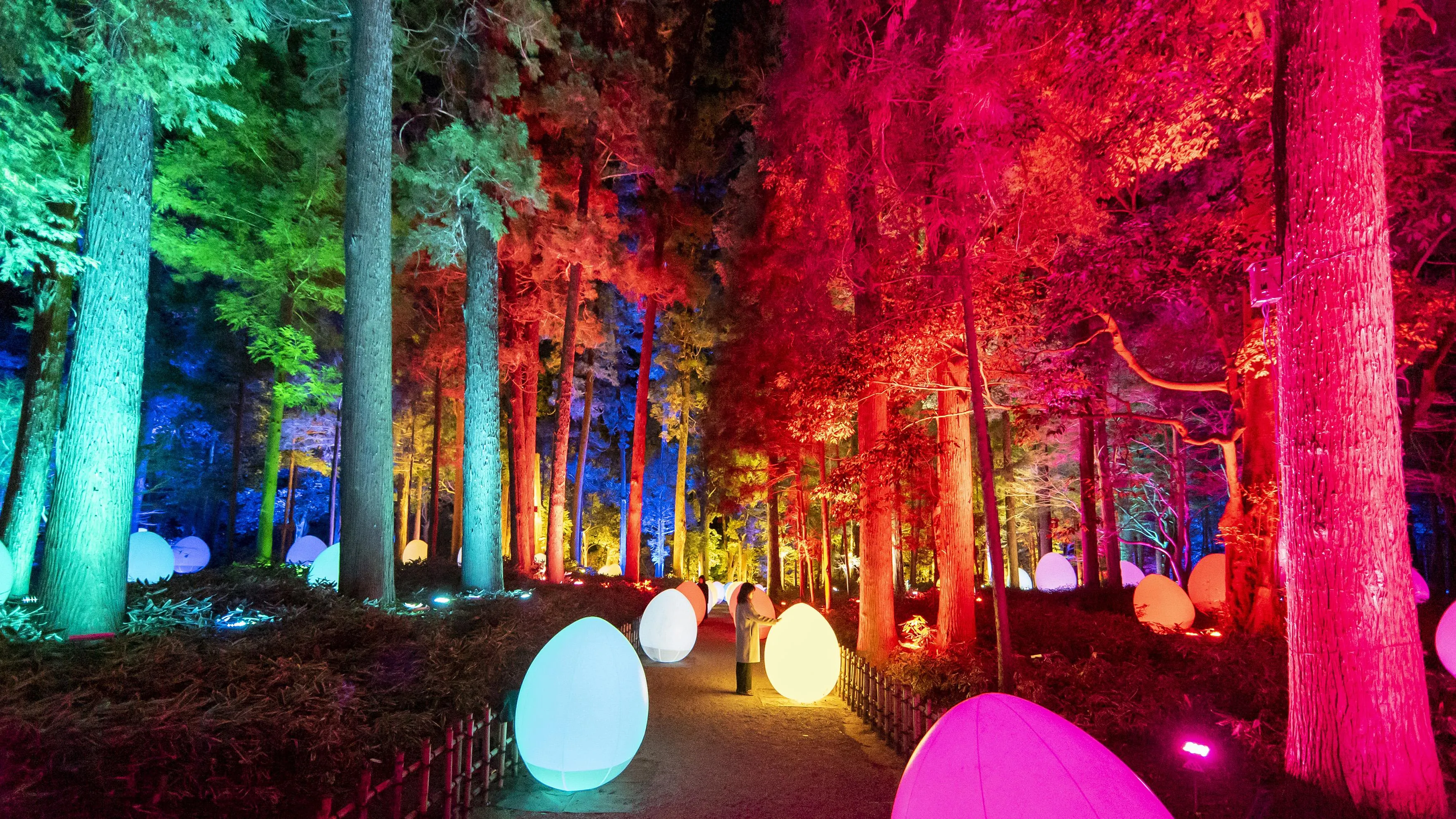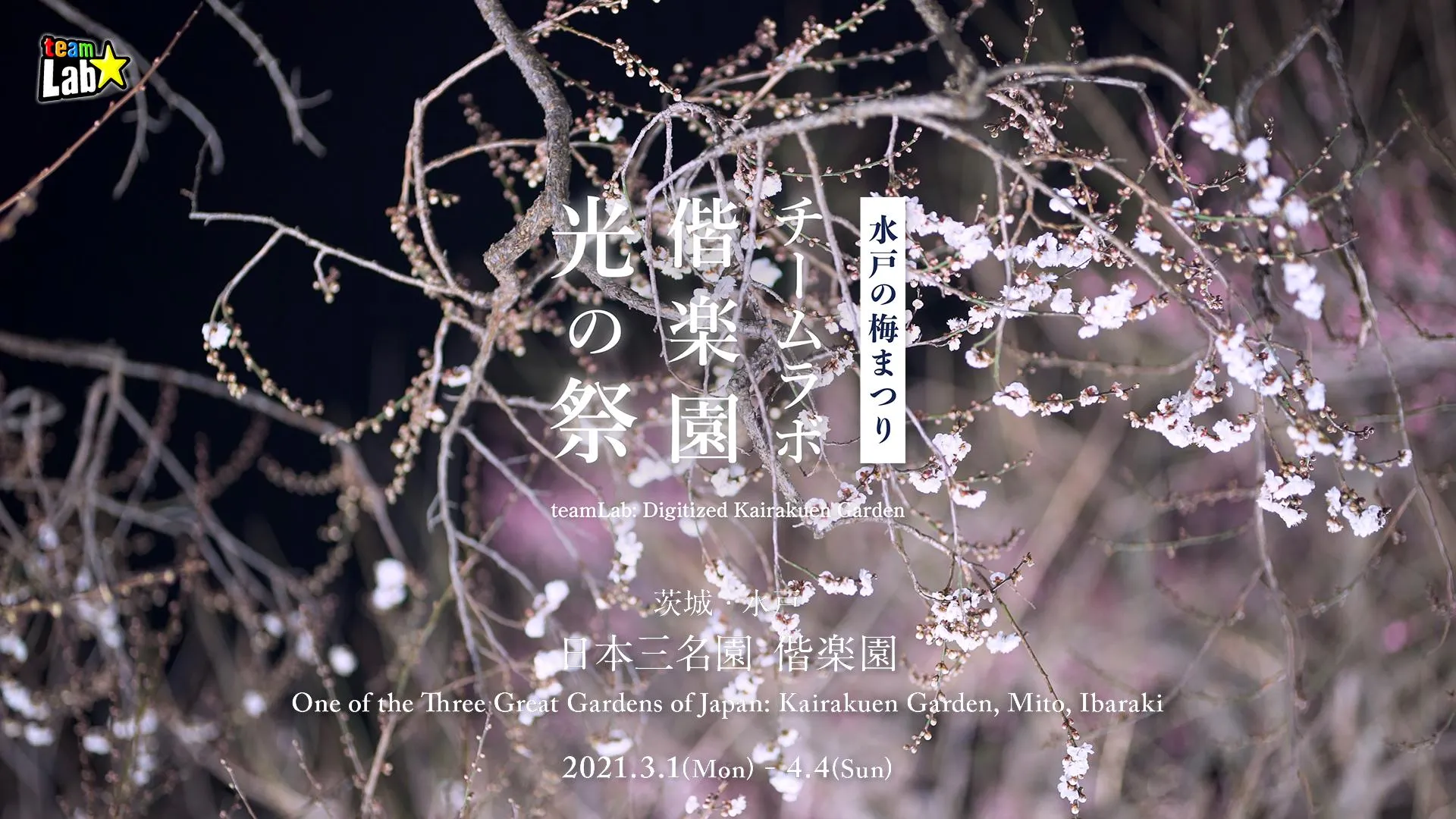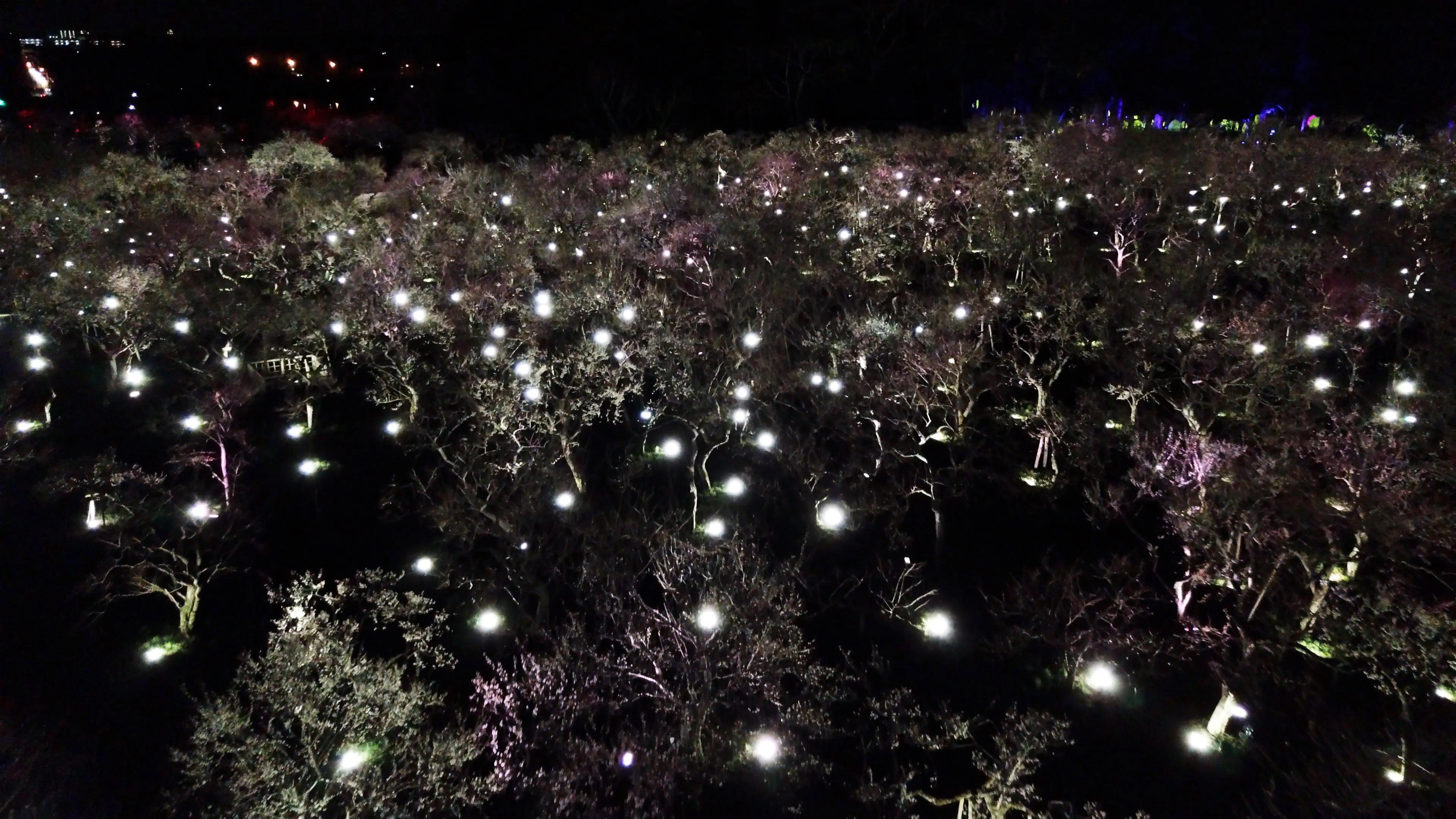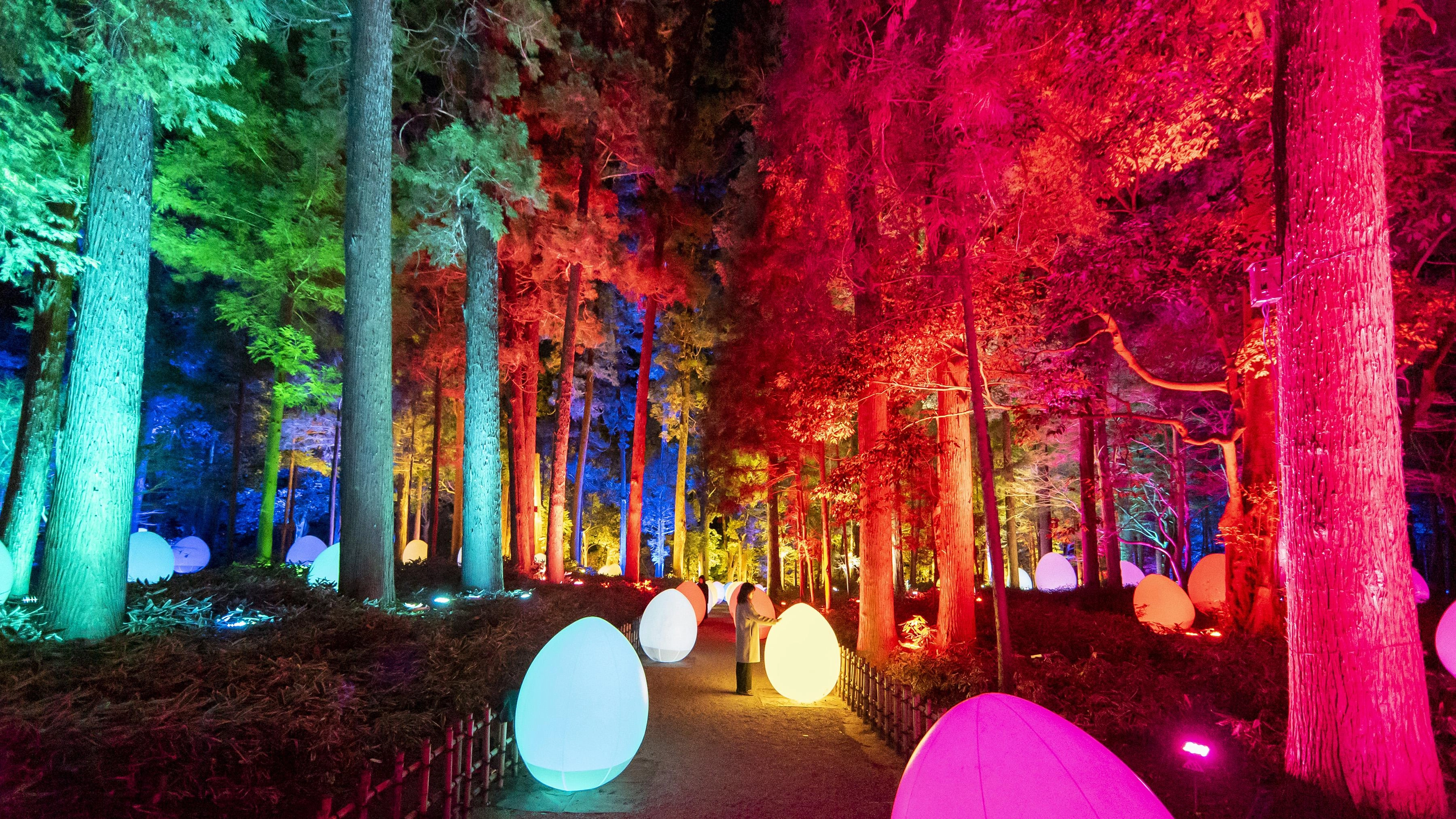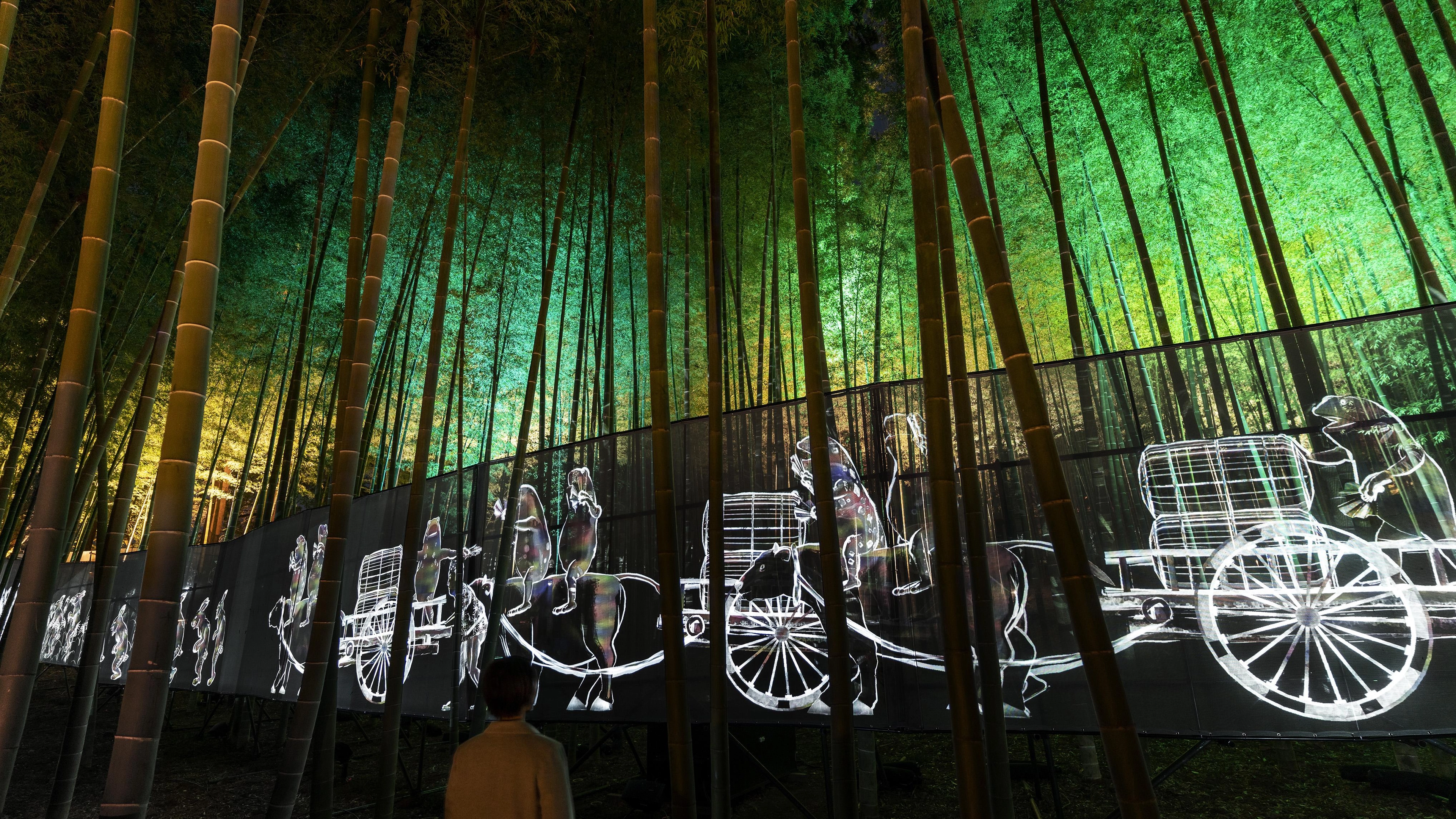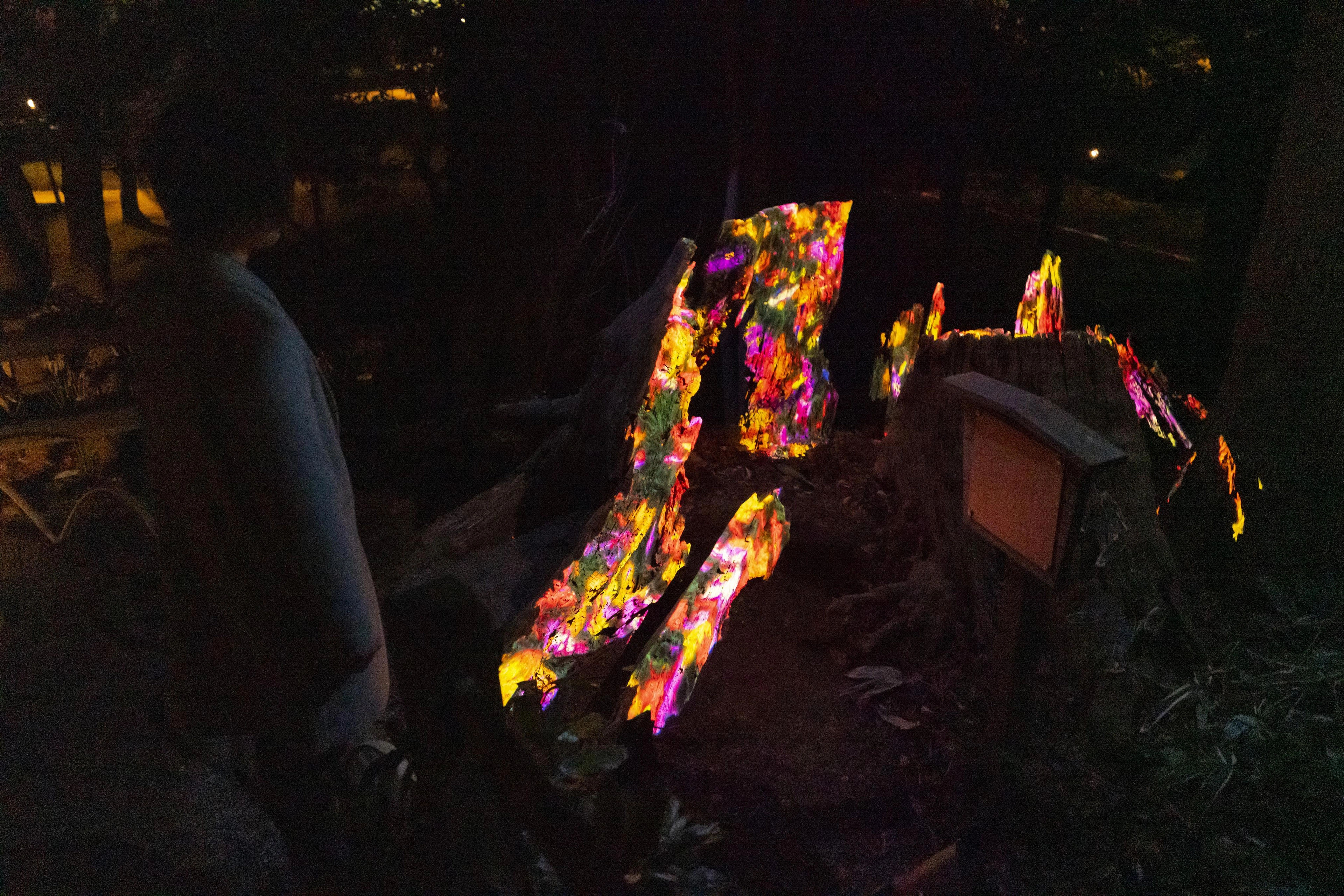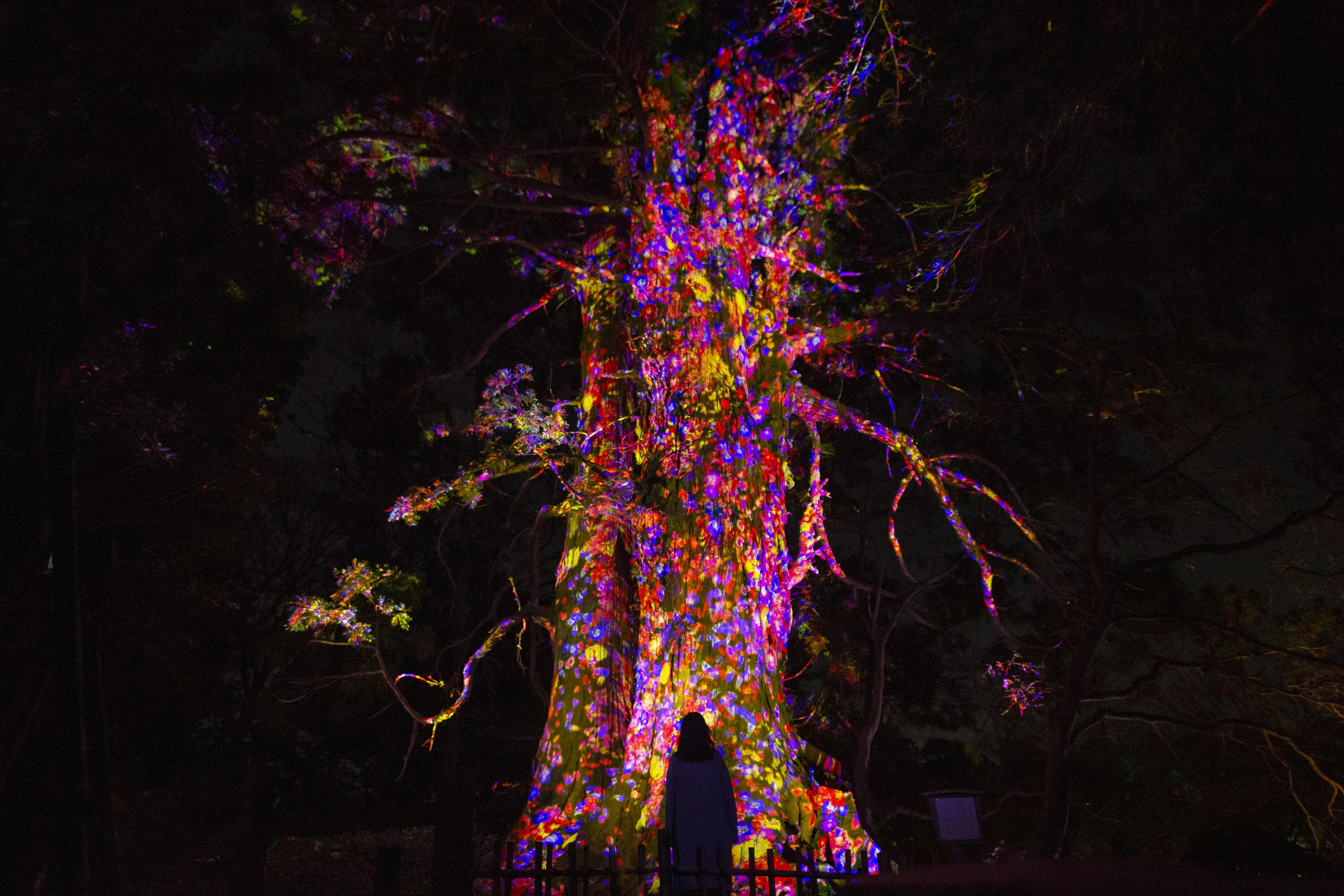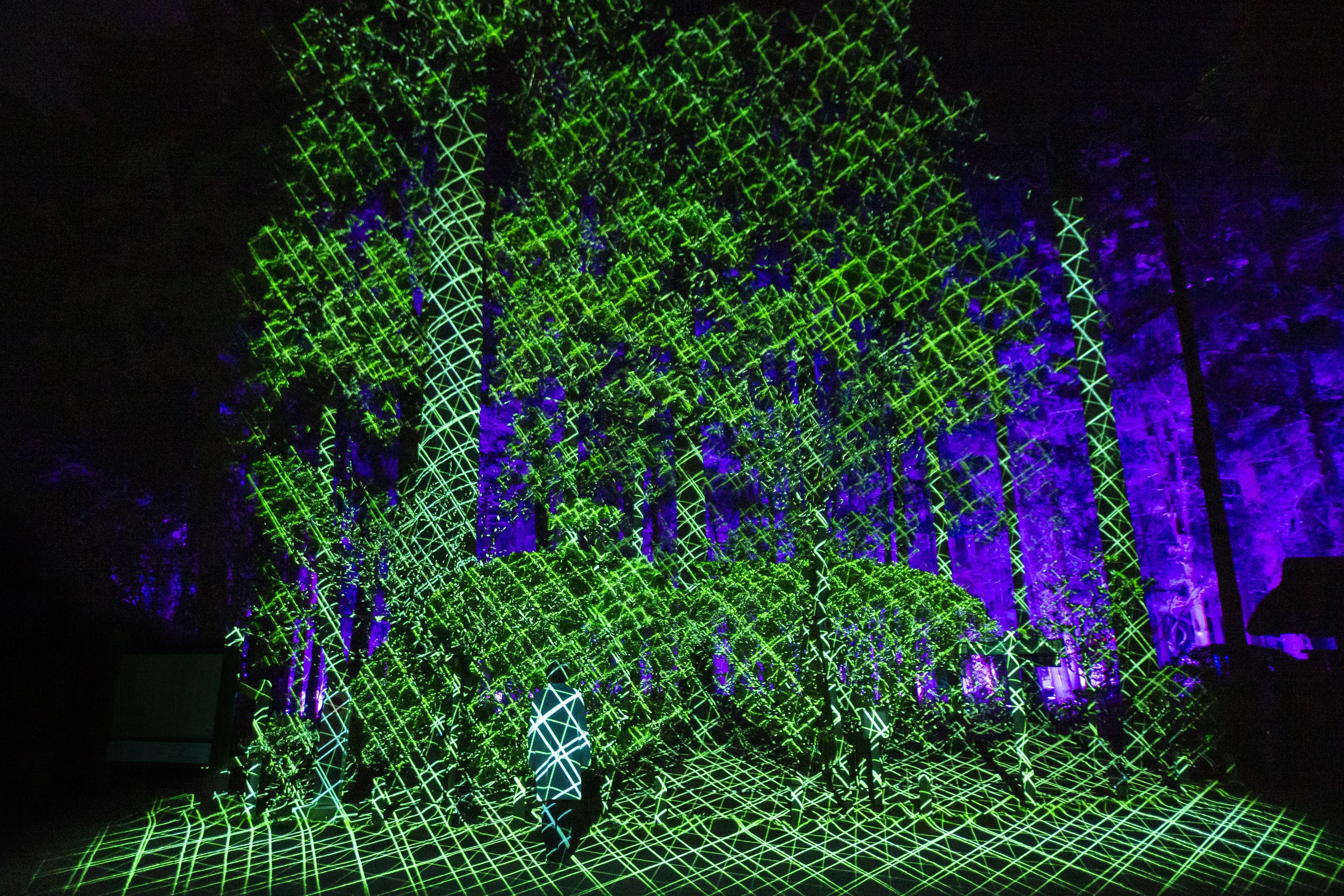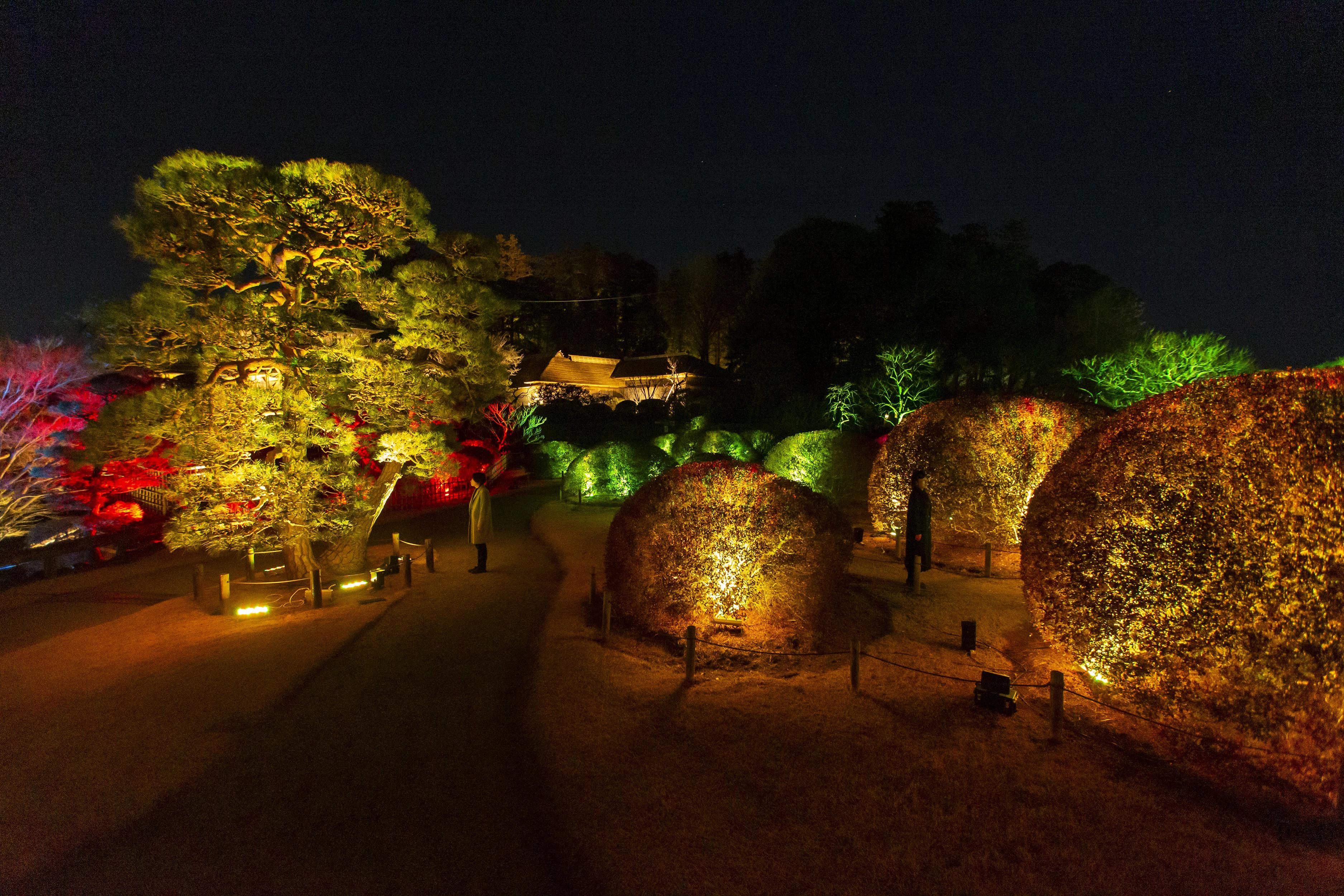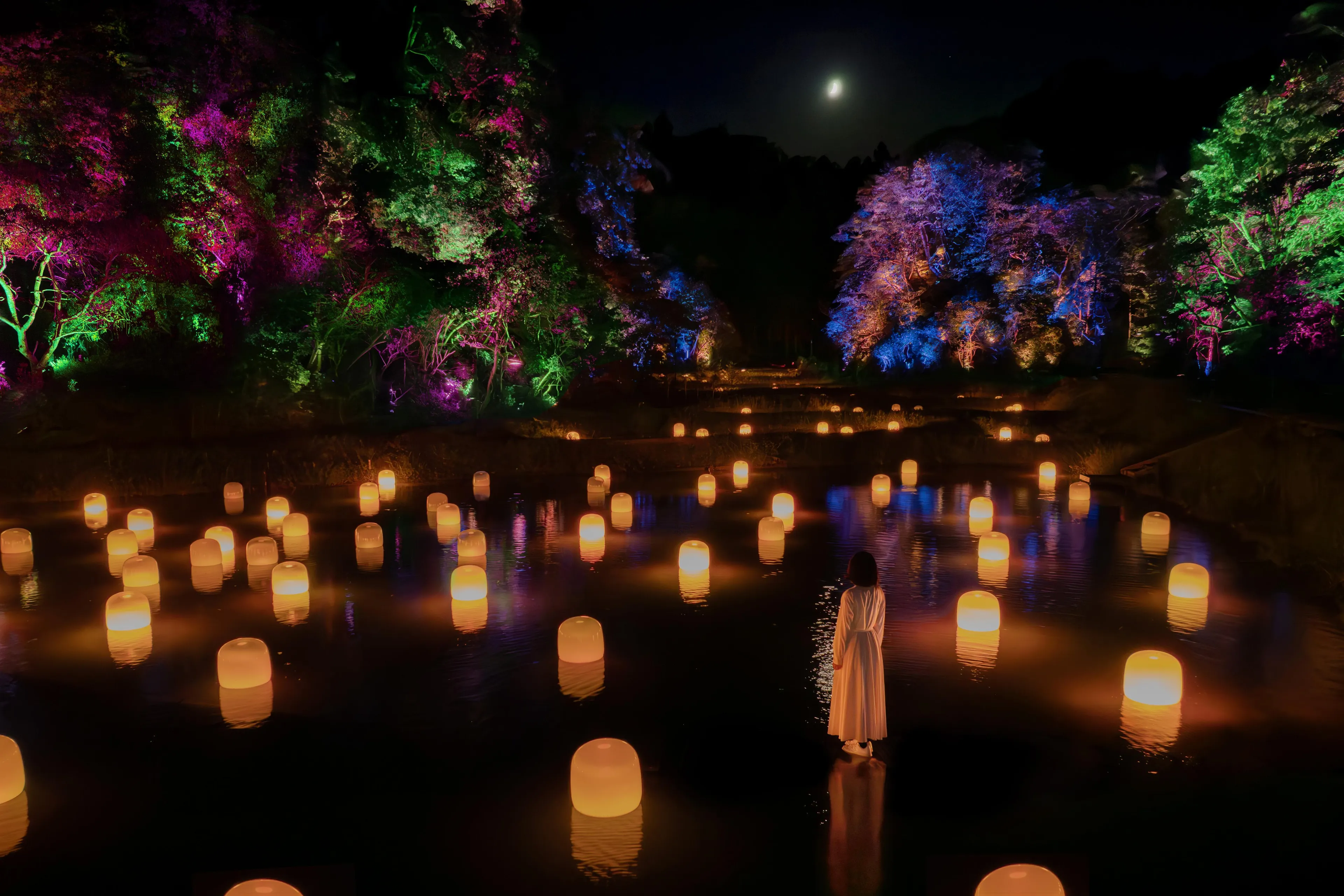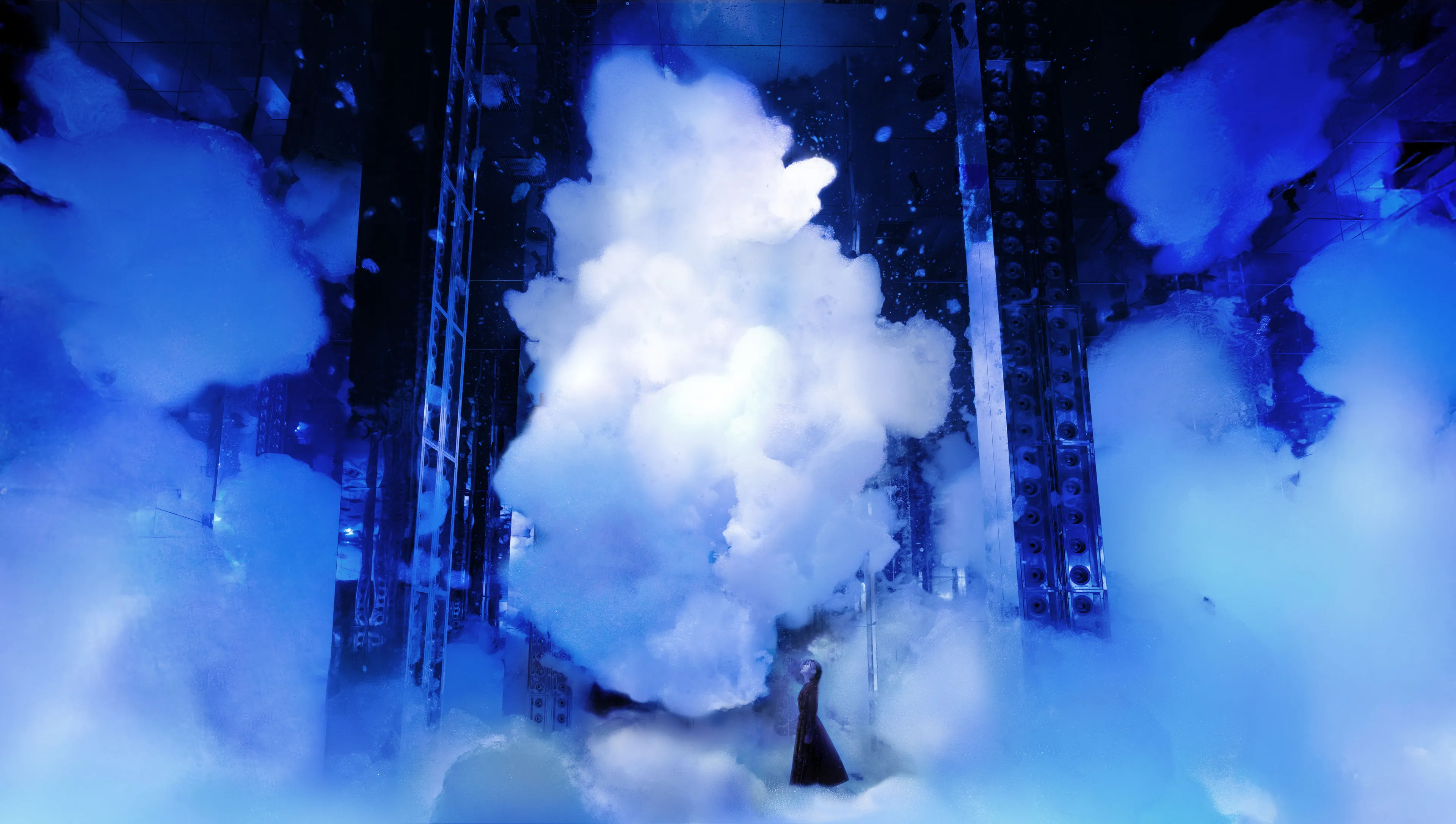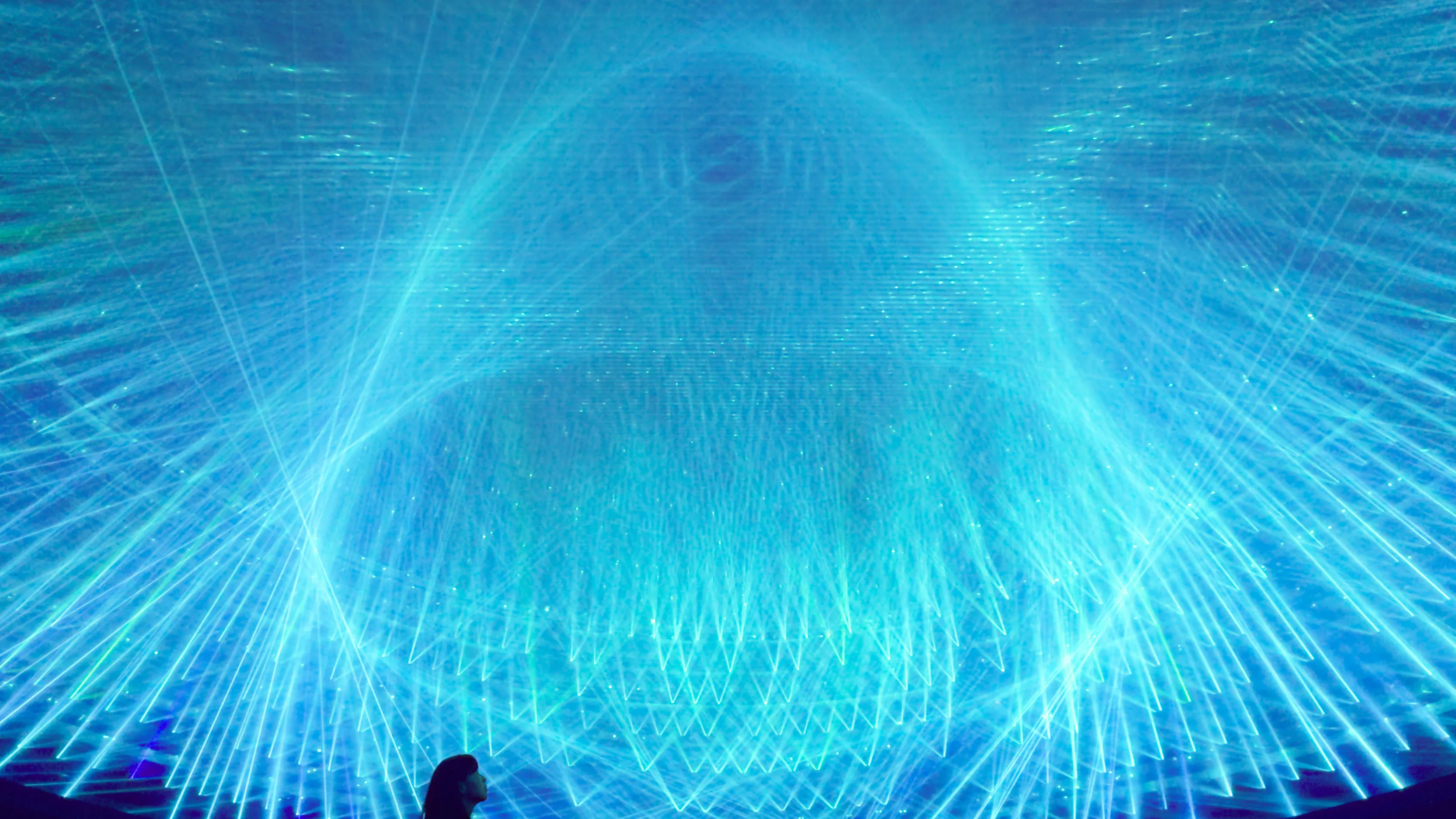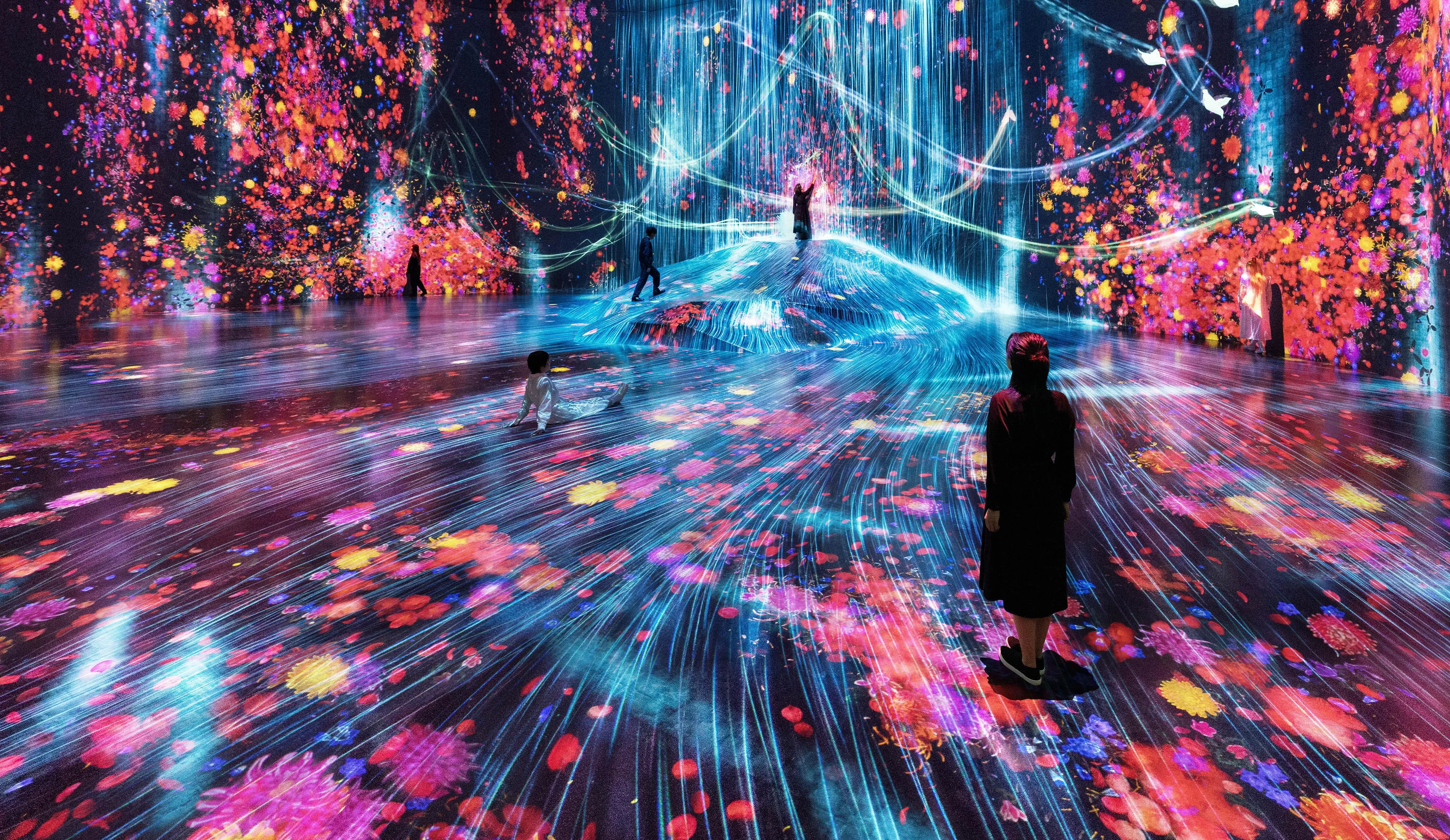Ever Blossoming Life Tree - Giant Taro Cedar
Flowers bloom and scatter for eternity on a giant tree (about 35m in height and 17.2m around the roots), which is said to be around 800 years old. A year’s worth of seasonal flowers from the area bloom over the course of an hour, continuously scattering and changing. Flowers are born, grow, bud, bloom, and eventually scatter, wither, and disappear. The flowers are in a continuous cycle of life and death, repeating forever.
Kairakuen Garden's giant cedar forest, created in the late Edo period (1842), changes daily with the imperceptibly slow flow of time, repeating every year. It is a space where endlessly long time accumulates. The giant cedar tree was probably here before the landscaping. The flowers that repeat the cycle of life and death have a different flow of time. Here, various space-times intersect and overlap.
Our own existence is part of this continuity of life and death, repeating endlessly, for an overwhelming length of time, for billions of years. However, it is difficult to perceive this in everyday life.
The eternal birth and death of the flowers on the giant tree that formed over an overwhelmingly long period of time and is beyond the boundaries of our cognition for long-term continuity, may allow us to realize that the existence of life itself is part of a continuous cycle of life and death.
The artwork is not a pre-recorded image that is played back; it is created by a computer program that continuously renders the artwork in real time. As a whole, it is continuously changing, and previous visual states are never replicated. The artwork at this moment can never be seen again.
